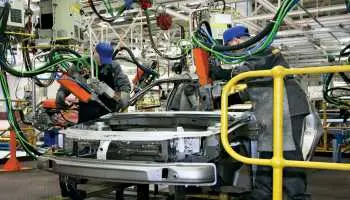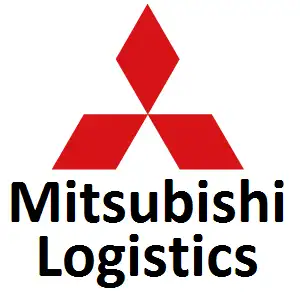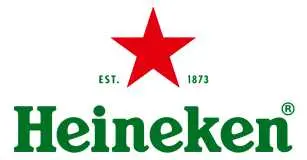
Automotive Vehicle-to-Everything Market Share, Trends, Growth Strategy, Revenue, Challenges, Opportunities and Forecast Research Report Till 2034: SPER Market Research
Category :
Automotive & Transportation
Published:
Jul-2025
Jul-2025
Author:
SPER Analysis Team
SPER Analysis Team
Automotive Vehicle-to-Everything Market Share, Trends, Growth Strategy, Revenue, Challenges, Opportunities and Forecast Research Report Till 2034: SPER Market Research
Global Automotive Vehicle-to-Everything Market is projected to be worth 692.23 billion by 2034 and is anticipated to surge at a CAGR of 42.45%.
Automotive Vehicle-to-Everything (V2X) is a communication system that allows automobiles to communicate with their environment, including networks (V2N), pedestrians (V2P), infrastructure (V2I), and other vehicles (V2V). By enabling real-time data sharing on road conditions, traffic signals, possible hazards, and more, it improves autonomous vehicle performance, traffic management, and driving safety. Cellular-V2X (C-V2X) and Dedicated Short-Range Communication (DSRC) are two wireless technologies used by V2X systems to facilitate dependable and quick communication. V2X is essential to creating safer, smarter, and more effective transportation ecosystems in both urban and highway settings as cars become more intelligent and connected.
Drivers: The market for automotive vehicle-to-everything (V2X) is mostly driven by the growing need for connected mobility solutions, traffic efficiency, and road safety. V2X adoption is being accelerated by growing investments in smart infrastructure and government programs that promote intelligent transportation systems. Real-time data processing for accident avoidance and route optimization is made possible by the increasing integration of 5G technology, which improves the speed and dependability of communication between cars and their surroundings. Furthermore, the necessity for strong V2X systems to guarantee safe and coordinated driving is being fueled by the development of driverless and semi-autonomous cars. All of these elements work together to support the V2X market's promising growth prospects.
Request For Free Sample Report @ https://www.sperresearch.com/report-store/automotive-vehicle-to-everything-market?sample=1
Challenges: The V2X market has a bright future, but it is also subject to a number of serious obstacles. Widespread adoption is significantly hampered by high initial deployment costs, particularly for developing infrastructure. Implementation becomes much more challenging due to interoperability problems between various communication protocols and vehicle models. Furthermore, consumers and government agencies have severe privacy and safety concerns about cybersecurity dangers such data breaches and possible car hacking. Another obstacle to smooth integration is the absence of uniformity in international marketplaces. Furthermore, the market's ability to fully supply intelligent mobility solutions is hindered in emerging nations by slower adoption rates brought on by poor internet penetration and financial restraints.
Market Trends: A number of significant trends are influencing the direction of the automotive V2X market going forward. Because of its superior scalability and 5G compatibility, cellular V2X (C-V2X) technology is becoming more popular than DSRC. To create comprehensive, end-to-end V2X solutions, automakers are working more and more with tech firms and telecom carriers. In order to facilitate quicker and more precise decision-making at the vehicle level, edge computing and AI integration are becoming increasingly popular. Public-private collaborations to develop smart city infrastructure are also becoming more prevalent in the market. Furthermore, laws requiring connected car features are being progressively implemented, which promotes greater industry involvement and creativity.
Global Automotive Vehicle-to-Everything Market Key Players:
Aptiv, Continental AG, DENSO CORPORATION, HARMAN International, Infineon Technologies AG, Mobileye, NXP Semiconductors, Qualcomm Technologies, Inc, Robert Bosch GmbH, and TomTom International BV are just a few of the major market players that are thoroughly examined in this market study along with revenue analysis, market segments, and competitive landscape data.
For More Information about this Report @ https://www.sperresearch.com/report-store/automotive-vehicle-to-everything-market
Global Automotive Vehicle-to-Everything Market Segmentation:
By Device: Based on the Device, Global Automotive Vehicle-to-Everything Market is segmented as; Roadside Unit, Onboard Unit.
By Communication: Based on the Communication, Global Automotive Vehicle-to-Everything Market is segmented as; Vehicle-to-Vehicle (V2V), Vehicle-to-Infrastructure (V2I), Vehicle-to-Pedestrian (V2P), Vehicle-to-Home (V2H), Vehicle-to-Grid (V2G), Vehicle-to-Network (V2N).
By Connectivity: Based on the Connectivity, Global Automotive Vehicle-to-Everything Market is segmented as; DSRC, Cellular.
By Vehicle: Based on the Vehicle, Global Automotive Vehicle-to-Everything Market is segmented as; Passenger Cars, Commercial Vehicles.
By Region: This research also includes data for North America, Latin America, Asia-Pacific, Europe, Middle East & Africa.
This study also encompasses various drivers and restraining factors of this market for the forecast period. Various growth opportunities are also discussed in the report.
Would you like to view the sample pages?
Get Sample PagesGet Your Report
Choose an option below to inquire or purchase the report.
Inquiry About Report Buy This ReportDomains Served
Our Global Clients
Our data-driven insights have influenced the strategy of 200+ reputed companies across the globe.




































